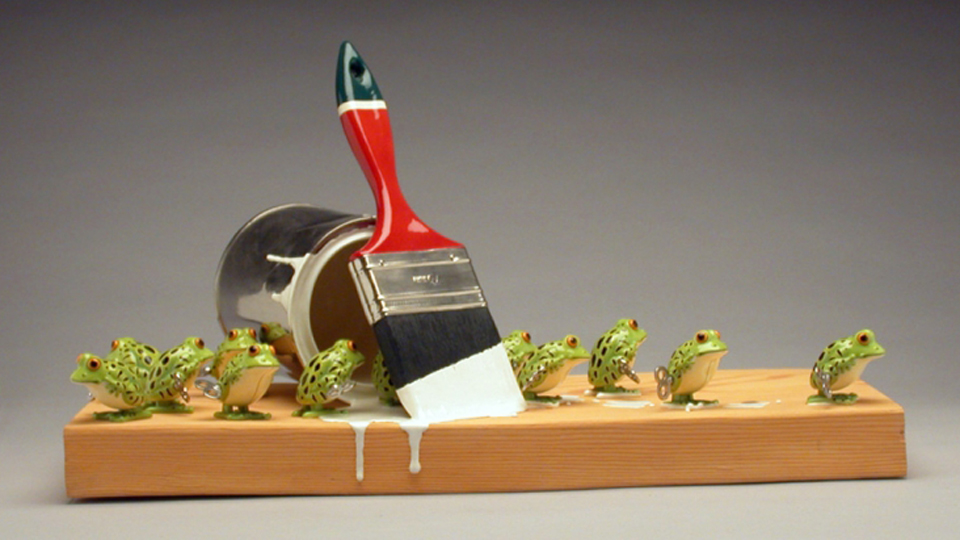The Gardiner Museum is empty. Located just across from the Royal Ontario Museum, which has four school buses lined up outside, it’s easy to understand why the competition is tough. One good thing about it is the pricing: student admission is only $6, and unlike at the ROM, it will get you into all the exhibits—there’s no extra cost for the featured show.
However, the Gardiner lacks the dynamic, kid-friendly energy of the ROM and the Science Centre. There are no touchscreens or video clips in the exhibits, no dinosaur skeletons or interactive static balls. The Gardiner Museum is all about ceramics, and nothing else.
The main attraction right now is the exhibit Animal Stories, which features more than 300 ceramic animals. There are few other visitors, and everything is behind glass or on a pedestal with a vindictive “DO NOT TOUCH” sign. The show spans over 300 years of ceramics, and what’s truly interesting about it is not the figures themselves but rather the change in the various messages expressed through ceramics over time.
Back in the day, i.e., around the 1700s, ceramics were decorative. Rich people owned them because they looked pretty and represented wealth. For this reason, the older pieces were the most irritating for me. I have trouble caring about teacups with hunting scenes on them, especially when I think about my student-budget coffee mugs from Ikea. According to the blurb on the wall at the entrance to the show, the selected pieces attempt to trace the relationship between humans and animals, but I get the sense that this is mostly BS. Also, I think there was some trouble filling wall space. Somehow, a stuffed pug and deer head trophies have made their way into an exhibit about animals in ceramics. The incongruence was a little startling.
Most of the pieces are impractical (what do you do with a collection of ceramic monkey figurines set up as an orchestra?) and a few make a valiant attempt to be useful (life-size Scottie dog vase, anyone?), but my favourite selections had some kind of social commentary behind them. “Five Liters—Avitus, Reptilis, Domesticus” by Canadian artist Wendy Walgate presented three large lab beakers in a triangle. The first beaker held mammals painted in flat pink hues, mostly domesticated farm animals. The middle beaker held green reptiles, and the right-hand beaker contained blue birds. From a distance, the beakers were simply attractive blocks of colour, but on closer examination, the whole piece was profoundly creepy. Each animal had a metal tag tight around its body, much like the markers in cows’ ears. The tags were numbered, by far the most disturbing element of the sculpture.
I read this piece as a commentary on animal testing, which was confirmed by the descriptive paragraph beneath. The statement offered another insight—the prioritizing in Walgate’s sculpture of “concept over process”. Essentially, the work of art didn’t require unmatched technical skill. The animals were cast from toys or trinkets and painted in a flat-effect style before being piled into a beaker. The beauty is in the concept, which frankly is much more appealing than detailed depictions of dogs chasing a deer across a cheese plate.
Animal Stories even incorporated an interactive element. At a table in the middle of the gallery, visitors were encouraged to draw their own animal on a square of paper and place it in the grid in the wall. I contributed a flamingo before I left, placing it in one of the many empty squares.
Animal Stories is on display at the Gardiner Museum until January 12.



